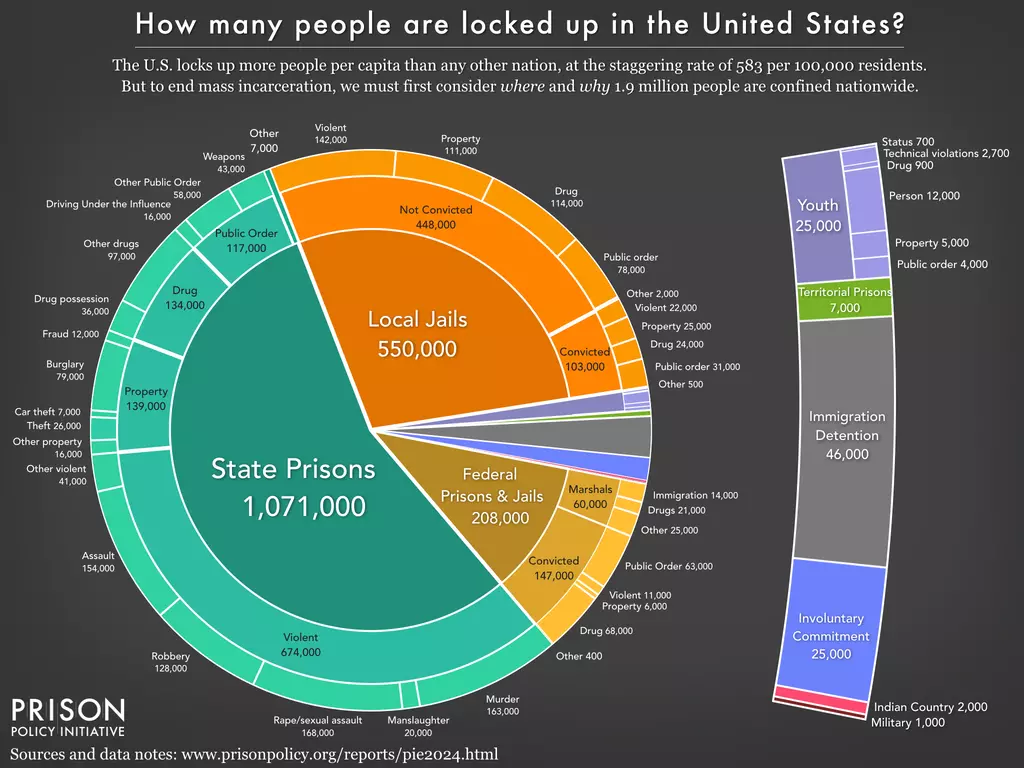Congress has released its Fiscal Year 2024 funding bill for the Department of Homeland Security (DHS), and it promises to make the detention and border enforcement system more dangerous and deadly while underfunding the civil society organizations and communities that provide critical services to newly arriving immigrants.
Jesse Franzblau, senior policy analyst at the National Immigrant Justice Center (NIJC), expressed strong opposition to the proposed bill, stating:
“The proposed funding bill for DHS includes increased detention beds, more border agents, and an increase in harmful border surveillance technology. Meanwhile, Congress is proposing to slash funding for the government grant program that funds localities and nongovernmental organizations to provide humane reception services for people who have recently arrived in the United States.”
Franzblau highlights the devastating impact this bill would have on immigration policy, arguing that it prioritizes punitive measures over humane solutions. He calls on Congress members to reject the bill, emphasizing the need for a fair and just immigration system.
Key Points of the Bill:
- Increased ICE Detention Budget: The bill raises the budget for Immigration and Customs Enforcement (ICE) detention from $2.9 billion to $3.4 billion. This expansion of detention facilities, including private prisons, is seen as a wasteful use of taxpayer dollars and a perpetuation of a harmful system. Reports of abusive solitary confinement practices in these facilities underscore the gravity of this decision.
- More Border Patrol Agents: Despite ongoing issues of abuse, impunity, and corruption within the Border Patrol agency, the bill allocates additional funds for more agents. This move is criticized for exacerbating an already problematic enforcement system.
- Increased Surveillance Funding: The bill also boosts funding for ICE’s surveillance and enforcement-based monitoring programs. These programs have been documented to cause significant harm, yet Congress continues to prioritize them over community-based, service-oriented models that have proven to be more effective and humane.
- Reduced Support for Civil Society Organizations: One of the most concerning aspects of the bill is the reduction of funds from $800 million to $650 million for the grant program that supports localities and civil society organizations. These organizations are on the frontline, providing essential care, shelter, and transportation to newly arrived immigrants seeking safety. The funding cut is a severe blow to these critical services.
This funding bill reflects a troubling shift towards a more punitive and less compassionate approach to immigration. By increasing resources for detention and enforcement while cutting support for humane reception services, Congress is favoring the interests of private prison CEOs over the needs of vulnerable people and communities. Advocates like Franzblau are calling for a rejection of this bill in favor of policies that uphold human dignity and justice.
Mass Incarceration and the War on Drugs: A Complex Web of Causes and Consequences
Understanding the root causes of mass incarceration in the United States is a challenging task. Two factors often cited are the war on drugs and the profit motives of private prisons. However, disentangling these influences and assessing their true impact requires navigating a landscape muddied by inadequate data and conflicting agendas.
The War on Drugs: A Major Driver of Incarceration
The war on drugs, launched in the 1980s, significantly contributed to the surge in incarceration rates. Harsh sentencing laws, such as mandatory minimums and three-strikes laws, disproportionately targeted non-violent drug offenses. This led to an explosion in prison populations, particularly among African American and Latino communities. Today, drug offenses still account for a significant portion of the prison population, with thousands incarcerated for minor, non-violent drug crimes.
Private Prisons: Profit Over Rehabilitation
Private prisons, driven by profit motives, also play a role in mass incarceration. These institutions benefit financially from high incarceration rates, creating a perverse incentive to maintain and even increase the number of inmates. Critics argue that this profit-driven model prioritizes cost-cutting and shareholder returns over rehabilitation and humane treatment of prisoners. While private prisons house a relatively small percentage of the total prison population, their influence on policy and practice is substantial.
The Myth of Reforms Triggering a Crime Wave
In recent years, criminal justice reforms aimed at reducing incarceration rates have come under fire, with some claiming these reforms have triggered a crime wave. However, evidence does not support this narrative. Crime rates have fluctuated due to a variety of factors, but there is no clear correlation between reform efforts and increased crime. In fact, many jurisdictions implementing reforms have seen stable or declining crime rates, suggesting that smarter, more humane policies can enhance public safety.
The Challenge of Fragmented Data
One of the biggest obstacles to understanding mass incarceration is the fragmented nature of data across the criminal legal system. With thousands of federal, state, local, and tribal systems, collecting and analyzing comprehensive data is a daunting task. Each system operates independently, often with its own set of rules and reporting standards, resulting in a patchwork of information that is difficult to synthesize.
The Need for Clearer Data and Informed Policy
This lack of cohesive data hampers the ability of policymakers and the public to grasp the full picture of incarceration in the U.S. It allows for the perpetuation of harmful myths and the advancement of policies that do not necessarily enhance public safety. As criminal justice reforms become central to political debates, it is crucial to base decisions on accurate, comprehensive data.
The Scope of the U.S. Criminal Legal System
The sheer scale of the U.S. criminal legal system is staggering. Over 1.9 million people are held across 1,566 state prisons, 98 federal prisons, 3,116 local jails, 1,323 juvenile correctional facilities, 142 immigration detention facilities, and 80 Indian country jails. Additionally, there are military prisons, civil commitment centers, state psychiatric hospitals, and prisons in U.S. territories. This extensive system costs at least $182 billion annually, a testament to the massive resources dedicated to incarceration.
Towards Informed Reform
Understanding the true drivers of mass incarceration and the impacts of criminal justice reforms is essential for creating effective policies. By improving data collection and analysis, we can better comprehend the complexities of the system and develop strategies that promote public safety, justice, and rehabilitation. As the debate over criminal justice reform continues, it is more important than ever to base our decisions on clear, accurate information and to challenge the misconceptions that hinder progress.


